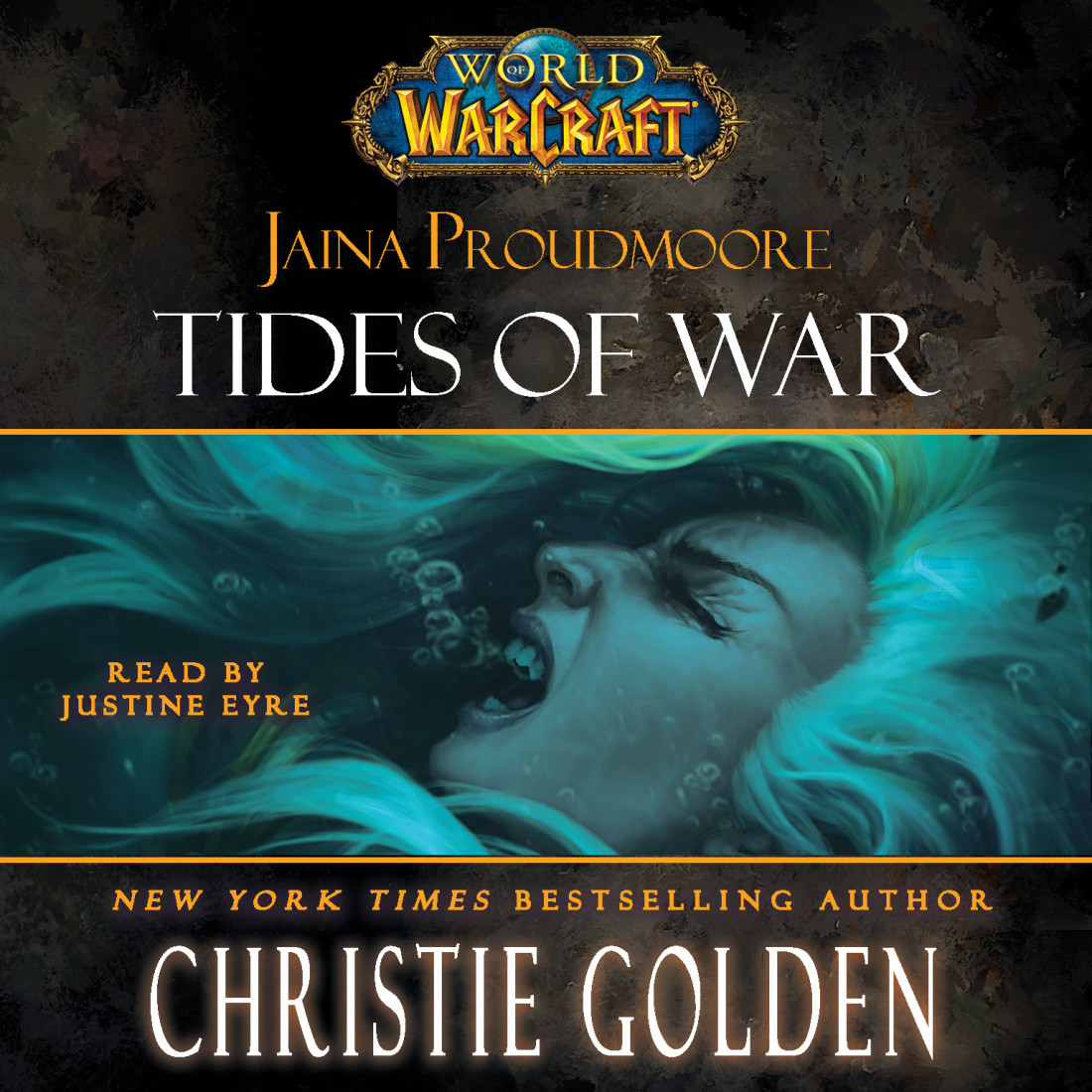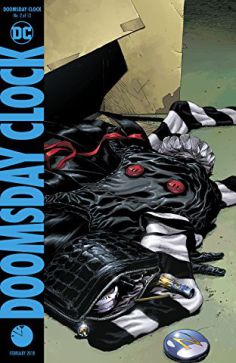


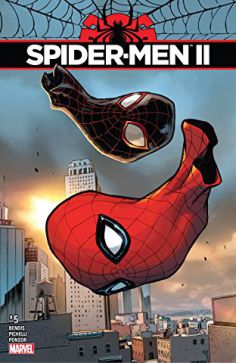
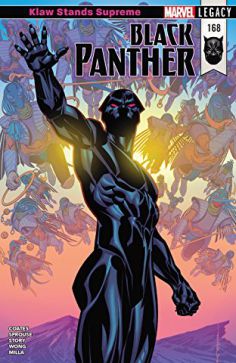
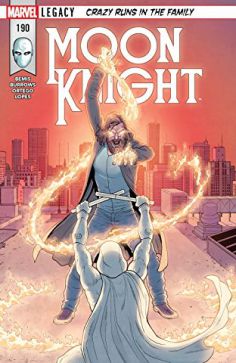
Doomsday Clock #2
After explaining why he had new-Rorschach break Mime and Marionette out of prison, Ozymandias warps the four of them out of their dimension just as a nuke is about to drop, and into Gotham City. He sends Rorschach to search for this new world’s second smartest man – Bruce Wayne – while he meets it’s smartest, Lex Luthor.
But things aren’t exactly peaceful in Gotham. Bruce and Lex are at each-other’s necks more than usual as LexCorp threatens to buy Wayne Enterprises out from under Bruce; something Wayne’s board is strongly considering in the fallout of the “Superman Theory;” which posits that metahumans are concentrated in the United States because of government experiments on the metagene carried out by biotech companies like Lex and Wayne’s.
Ozymandias and Rorschach eventually find their targets, neither of whom are happy to see the intruders, and both with surprises prepared for their guests.
This issue starts off with a bit of a stumble, with a flashback that isn’t signaled as such which makes it confusing when the same characters seem to be in two places at once. But hey, time is only linear because of human limits of perception, right? After all, in comics, time is more clearly perceived as space, and by scanning a page we can see past and future simultaneously…
But yeah, no, I had to read that part a few times before I understood oh – flashback. Frustrating.
Things do pick up once the Watchmen characters crossover, starting on the first page we see them enter the DCU – the lights of the Owl-ship becoming eyes in the shadow of the Bat-signal. The issue delivers on some more fan-servicey things as well, like Rorschach discovering the Batcave, or the meeting of the minds between Ozy and Lex. Overall, Frank continues to illustrate this story fantastically, and makes great use of the nine-panel grid, breaking out from it only sparsely, and effectively.
And of course, seeing Ozy and Rorschach’s last moments on their Earth forces us to ask what will even be left to save by the time they return? Nukes are already dropping. “Smartest man on the cinder” indeed.
Batman: Creature of the Night #2
We open after a time-skip. Bruce is at Harvard, and his inheritance has ballooned into Wainwright Investments, making him fabulously wealthy. But at nights, he still summons the Batman to fight crime in Boston. And, still inspired by the comics of his youth; Bruce becomes a philanthropist, sponsoring orphans, and using his money to wage a campaign for fairness. Coming out of his childhood tragedy, Bruce Wainwright is living his best life.
Because of the time-skip, this issue devotes a lot of time to reestablishing what we’re supposed to know about this world and it’s characters. Wainwright continues to grow into the mould of Bruce Wayne, even as the broad extremes of childhood temper into the nuances of young adulthood. Bruce is as idealistic as ever, but he understands that – despite his experience with Batman – he can’t just wish a better world into existence, you’ve got to put some money behind it. He’s also just become a more understanding person, able to realize why his uncle Al kept the distance he did in his childhood, and accepting him for it. He invests in a company with a black CEO because it’s the right and smart thing to do despite racism making it a potentially risky investment. He tries to give other orphans the same opportunity and privilege he had.
There’s very little conflict in this issue; Bruce’s tragedy has past, the ones he deals with now are more distant from him, and he’s able to be proactive about correcting them. The issue tells us that Bruce is still somewhat remote, unable to truly expose himself in front of others because of Batman; but we never really see how it affects him negatively. Just some lost sleep and a light obsession with crime. Unlike Wayne, Wainwright doesn’t even put himself in any physical danger on his nightly patrols.
Of course, as the retrospective narration tells us, the worst is still yet to come. And at the very end of this issue, we’re given a hint as to what that “worse” may look like.
Nightwing: The New Order #5
The Titans break Jake and themselves out of the government holding facility, but internal conflicts start up as soon as they’re back on base. Dick wants to take Jake back home, while the other Titans, and now Jake himself, want to try to develop a cure for what Dick did to the world. The Titans knock Dick out and head towards Metropolis, where they meet up with…well, exactly who you’d expect them to meet up with in Metropolis. Maybe not exactly exactly.
The second and third acts of this issue are doing an interesting thing in showing us that, despite all that’s happened, Dick hasn’t learned a thing. He’s still a fascist. He thinks he should be less mean about it, but he still believes that superpowers are unilaterally bad and people should be controlled. And by the final page of the issue, it’s made clear that he’s definitely still a villain.
On the flipside of Dick is Superman, who’s still patrolling Metropolis despite the loss of his powers. He’s teamed up with former enemies and is still putting his life on the line for people who would see him locked up. Despite what he may have done in the past to cause Dick’s change of heart; Jake can still tell the difference between the two men – that Superman is inherently generous and good while Dick became stubborn and selfish.
Spider-Men II #5
Bendis wraps up this crossover with a bit of a non-ending that still asks more questions than it answers. The Spider-Men face off against Taskmaster one more time, other Miles crosses over into another dimension, and Peter apologizes for saying Miles shouldn’t be Spider-Man in that Bendis way that’s more “ums” and “yeahs” than words that mean things. It’s not just that this story has felt pointless, but that Bendis has already done it better, and in a single issue – Generations: The Spiders.
The art team on this issue do great work, as they have for the entire series, although there are times where they can’t track of whether Miles is wearing his mask or not, and there’s one really gratuitous ass-shot near the end.
Black Panther #168
The Dora Milaje ask Ramonda, the Queen Mother, to supply an army for them to rescue Ayo and Aneka from Azania. She tells them that, while, under the new constitution, she cannot unilaterally provide them an army, and in doing so declare war on another country; she has not forgotten her duty to her people. Meanwhile, T’Challa and his royal coterie are struck down over the desert that used to be Lake Nyanza (Victoria), and ambushed by an army of the originators.
If Coates’ first arc on Black Panther could be seen as a bit of a refute of the claim that superhero stories are inherently fascistic; this arc doesn’t even seem interested in having that conversation. The issue begins with a strange royalist argument, as Ramonda tells the Doras that the reason she can’t help them is because of democracy, and that if Wakanda was still a monarchy, they’d already have their army. Of course, this is coming from the Queen Mother, so, some resentment of parliament and their hesitation to start a war is to be expected.
But Wakanda is, at least unofficially, at war on two fronts – against the Originators and Klaw, who has manipulated Wakanda’s neighbors against her; and as most war, this one requires decisive action. Whatever T’Challa’s plans were are derailed somewhat by crashing, but his crew have proven more than capable of taking care of themselves. And despite not being “allowed,” he and Ramonda also have a plan to help the Doras; democracy be damned.
Moon Knight #190
The avatar of Ra explains to Bushman and his army that Ra and Khonshu have sent avatars to Earth to war against each-other through all of history, and that while the Moon Knight has always won, this cycle will be different. And as Marc and Jake duke it out in their shared mindspace, Ra and Bushman visit the house of Marlene – Marc’s ex whom he is very not over.
After the previous two volumes of Moon Knight; starting with Warren Ellis and Declan Shalvey’s run in 2014 and running through Jeff Lemire and Greg Smallwood’s take earlier this year; took Moon Knight into darker and more psychedelic and complex spaces, this run just seems too tame, standard cape-fare, kinda boring. Taken on its own, it’s a perfectly fine comic book, but it’s perfectly fine at doing what dozens of other books are. This is no longer a Marc Spectre confused by his perceptions of reality and unsure of what is real, or who feels like the pawn of divine whim – he’s just a superhero who thinks he’s three slightly different contentious superheroes.
Advertisements Share this:


